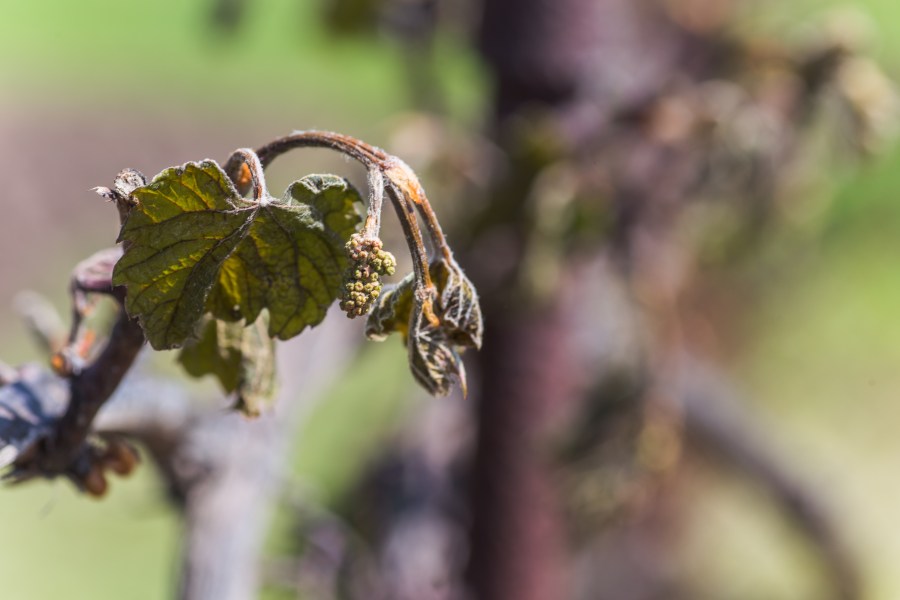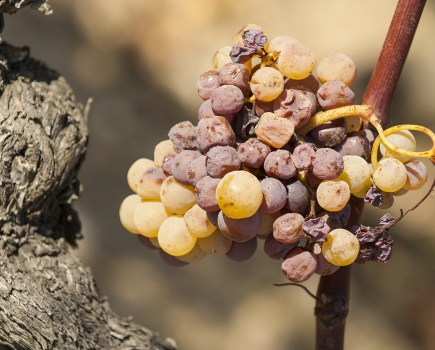It seems premature to be talking about managing frost risk on new growth as we go into the dormant winter months, but some simple actions now could help reduce the risks next spring. Hutchinsons agronomists Rob Saunders and Chris Cooper explain.
Our climate may be warming, but May 2020 showed how devastating late frosts can still be.
The damage to primary inflorescences reduces yield, and causes uneven grape maturity where some crop arises from primary buds, and the rest from secondary or tertiary buds.
There is only so much anyone can do to protect vines if temperatures really plummet when inflorescences emerge (usually mid-April to mid-May), but there are some jobs growers can do over coming weeks that will deliver benefits next spring.
Manage airflow
Aside from careful site selection, one of the biggest ways to manage frost risk is to ensure good airflow around vines, reducing the risk of frost pockets developing.
Slopes are a natural ally in this respect, as cold air sinks to the lowest point. It is therefore vital to maintain air drainage holes in hedges and undergrowth at the bottom of slopes, so cold air can escape. Experience shows running water near these holes can help draw cold air away more effectively.
Understanding the topography of your site, especially if it is new to growing vines, is critical to identify potential frost pockets, and Terramap’s contour mapping could be a useful tool to help assess the risks.
Keeping boundary hedges trimmed, along with other vegetation, such as cover crops or long grass in alleyways, also aids airflow.
Control weeds
Maintaining a weed-free area beneath vines has dual benefits for reducing frost risk. Alongside improving air movement, bare soil more effectively absorbs the sun’s heat during the day and radiates it back out at night, raising the temperature around vines slightly.
Of course, leaving soil bare over winter conflicts with soil health principles, so it may be preferable to retain some weed cover in the undervine strip until closer to the main frost risk period.
A balance must be found though, as we cannot expect a single herbicide application to control large, well developed, weed populations in one hit, therefore a staged approach using different actives may be required on particularly weedy sites.
Glyphosate is a key tool in the armoury, but Kerb (propyzamide) offers an alternative mode of action. It is also slower-acting, taking several weeks for growth to die back after treatment, thereby providing some soil protection and substrate for soil organisms during this period. Remember, Kerb has a limited application window of 1 October to 31 January.
Delay pruning
Pruning later can be a way to delay bud break, but there are obvious practical limitations to doing this across large vineyards, so many growers will critically appraise sites and prioritise just the most frost-prone areas to prune last.
When pruning, it can be useful to leave extra sacrificial canes in high frost-risk areas. This has two benefits. It means there is more material to select from should frost damage occur, and also, the distal buds on the upright cane tend to break first, fractionally delaying the emergence of buds on the other cane that has been tied down. The delay may only be marginal, but it could make all the difference.
Bowing the cordon to minimise contact with metal wires can also help. Wires conduct heat and cold, so generally the bud closest to the tie on the wire gets frosted first if bowed, whereas all buds can get scorched if laid flat.
Frost protection products
There are many products available that claim to offer frost protection, but the jury’s still out on the effectiveness of many of these.
Applying copper to vulnerable shoots before the main frost risk period, for example, is said to reduce the presence of ice-nucleating bacteria (e.g. Pseudomonas syringe) on buds, or foliar tissue, thereby reducing the likelihood of frost forming. There is some evidence to support this, but little from UK vineyards.
Other literature suggests that keeping grass short can also reduce the amount of Pseudomonas syringe that makes its way onto buds.
Experience with spray-on acrylic polymers (e.g. Antistress) and hydrophobic particle films, that form a physical barrier against frost, has also seen mixed results, so while they could potentially help, we must not expect too much.
One of the more interesting treatments is the glycine-betaine based product, Lalstim Osmo. The natural extract is an osmoprotectant that increases the strength of plant tissue and boosts the circulation of sap flow, water and nutrients, thereby offering some protection against light frost when applied 24-48 hours before frost is due.




